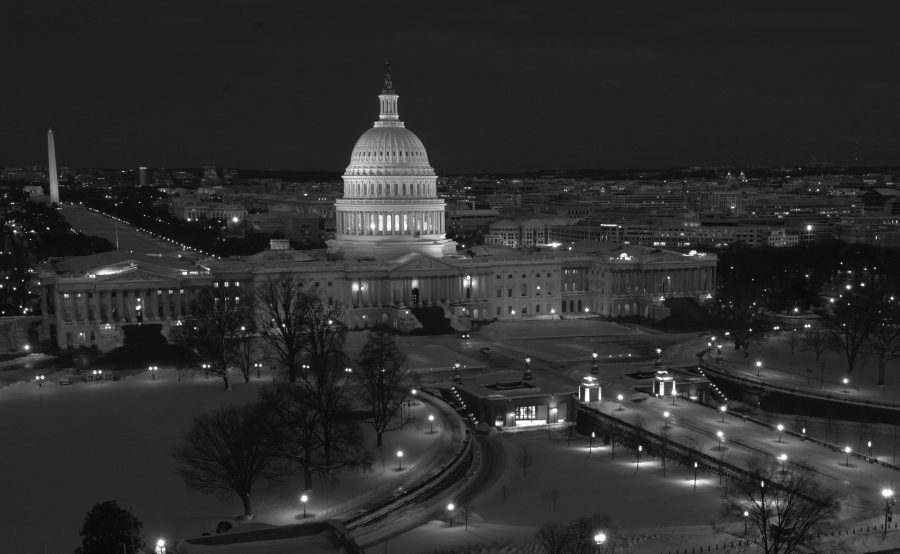President Trump’s schedule (EST):
11:30 AM: Daily intelligence briefing;
12:15 PM: Lunch with Acting Interior Secretary Bernhardt; and
6:15 PM: Reception for National African American History Month.
China trade talks reach a critical stage tomorrow. This morning, Bloomberg noted:
Negotiators in Washington are working on multiple memorandums of understanding that would together form the basis of a final trade deal between the U.S. and China. Liu He, China’s chief negotiator, is expected to meet with U.S. President Donald Trump tomorrow as efforts continue to extend the current March 1 deadline in order to allow more talks. Morgan Stanley Wealth Management has warned that markets are too optimistic about a resolution to the dispute, while another front in the trade war might open soon with relations between the EU and the U.S. continuing to sour.
USTR Lighthizer will testify on our trade talks at 10 AM, Wednesday, February 27 before the House Ways and Means Committee per yesterday’s hearing notice.
“Can Washington keep watch over Silicon Valley? The FTC’s Facebook probe is a high-stakes test.” Yesterday’s Washington Post article led with:
The Federal Trade Commission is under pressure to issue a steep fine and other sharp penalties against Facebook to prove that it’s able to keep Silicon Valley in check, privacy advocates and congressional lawmakers say.
To some critics, the watchdog agency has been too lenient on tech giants, despite years of mishaps that put people’s most sensitive personal information at risk — including a major scandal at Facebook last year that affected more than 87 million users.
Nearly a year after announcing an investigation into the incident, the FTC is negotiating with Facebook over a fine that could be billions of dollars, according to multiple people familiar with the probe who spoke on the condition of anonymity last week because they were not authorized to discuss the issues. Experts say the government has to seize on the opportunity to send a message — to Facebook and its peers — that it hears consumers’ frustrations and is willing to challenge the tech industry’s data-collection practices.
“Charting a Responsible Path for Discretionary Spending.” President Trump’s FY2020 Budget is expected to be released on March 11. Then Congress will grapple with raising the discretionary spending caps as noted in yesterday’s Committee for a Responsible Federal Budget Office blog.
The combination of large spending cap increases for 2018 and 2019 and the return of sequester-level caps in 2020 means that discretionary spending is scheduled to decline by $126 billion (10 percent) between this year and next. Some have called for not only avoiding this cut but also enacting further spending increases.
There’s little doubt in my mind that Congress is in no mood to cut spending, so we are very likely to see another deal to raise the caps.
“Wall Street, Seeking Big Tax Breaks, Sets Sights on Distressed Main Streets.” Yesterday’s New York Times article led with:
Distressed America is Wall Street’s hottest new investment vehicle.
Hedge funds, investment banks and money managers are trying to raise tens of billions of dollars this year for so-called opportunity funds, a creation of President Trump’s 2017 tax package meant to steer money to poor areas by offering potentially large tax breaks. …
The provision that created the funds was added to the tax law by Senator Tim Scott, Republican of South Carolina, and had been supported by Democrats and Republicans in previous legislation. It lowers capital gains taxes — potentially dramatically — for investors who finance projects in about 8,700 so-called opportunity zones spread across the 50 states, the District of Columbia and Puerto Rico. …
The law permits an investor to roll over capital gains — proceeds from the sale of stocks or a home, for instance — into an opportunity-zone fund. The fund can then put the money in a zone by investing in, say, a condo project or affordable-housing units.
An investor who keeps money in a such a fund for 10 years is able to exclude 15 percent of the original capital gain from taxation. And — potentially much more lucratively — the investor would not owe taxes on any gains that accrued if the investment increased in value in that time.
Firms that have started such funds or are considering doing so include the major real estate development company Starwood Capital; EJF Capital, a hedge fund based in Arlington, Va.; and the real estate investment firm GTIS Partners. The biggest opportunity-zone fund announced so far is a $5 billion fund by CIM Group, a large real estate investment firm and property manager.
The National Council of State Housing Agencies, which is tracking opportunity-zone funds, found that money managers and nonprofits had so far sought to raise over $18 billion, not including the CIM Group’s venture.
Yesterday, the Tax Foundation noted that 15 NFL football stadiums are in opportunity zones.
“Lower tax refunds show how the Republican tax cut is keeping money in your hands all year.” Yesterday’s USA Today op-ed by Senate Finance Chair Chuck Grassley (R-IA) and House Ways and Means Ranking Republican Brady (R-TX) debunks the notion that initially “lower tax refunds means higher taxes.” It added:
Never mind that the size of average tax refunds varies from year to year in the U.S. – Morgan Stanley estimates total refunds will actually increase this year by 26 percent, or $62 billion.
Set aside that the Treasury data is merely the first few weeks of a very unusual tax season due to the partial government shutdown. And ignore the important fact that refunds which include tax credits from earned income and additional child credits aren’t reflected in these initial reports.
I expect a surge of refunds to be reported during the first two or three weeks of March, leading to an overall increase in refunds through May of at least the $62 b. estimated by Morgan Stanley. Tax refunds have surged after most past tax cuts.
“Trump’s shutdown could hinder tax collectors for ‘months, and even years’.” Yesterday’s Washington Post column led with:
President Trump’s partial government shutdown is over, but the haunting effects are not.
Perhaps nowhere is that demonstrated more than in the Internal Revenue Service, one agency that affects all Americans.
Listen to the words of advocate Nina Olson, an independent official within the IRS. Her latest report describes an agency with a “shocking” level of service, suffering a “cycle of frustration,” and one beset with long-standing problems made worse by the 35-day partial shutdown.
She described an agency so damaged that taxpayer trust and confidence in our tax system have been crippled.
“It is irresponsible for an agency that touches all aspects of people’s lives to be underfunded, understaffed, and at the mercy of shutdowns,” she wrote. “It is making strategic decisions that ultimately burden taxpayers, increase its own rework, and create distance and distrust between taxpayers and the tax agency, thereby undermining voluntary compliance.”
I’m very concerned about the ability of the IRS to collect revenue after year’s of budget cuts, antiquated technology, loss of experienced personnel, political attacks, and shutdowns. I keep telling Hill staff and anyone else who will listen that once you lose voluntary compliance – when my neighbor boasts of evading taxes, and I decide I might as well too — it will take a generation to get it back.
Health Care: “Spending forecast offers ammunition — and some alarm — for Democrats pushing Medicare expansion.” This morning’s Washington Post article led with:
Aging baby boomers will consume an ever-larger share of the nation’s health-care spending over the coming decade, regardless of the success of Democrats running for president with ambitious plans to broaden Medicare.
The number of people covered through Medicare — and spending on the federal insurance program for older and disabled Americans — is expected to grow more rapidly than private insurance or Medicaid, eating up a larger chunk of health spending, according to a yearly forecast of U.S. health-care expenditures released Wednesday.
The forecast also anticipates that without changes in federal policy, the share of Americans without health coverage will remain steady at about 10 percent, rising slightly by 2027, when 36 million people are expected to be uninsured.
In addition, the projections anticipate that consumers will pay an escalating portion of their medical bills out of their own pockets, with annual spending increases averaging 5 percent from next year through most of the next decade.
Taken together, the forecast prepared by the Centers for Medicare and Medicaid Services contains ammunition for and against Democrats framing their case for the 2020 presidential nomination around broader access to coverage and lowered costs, health policy experts say.
The U.S. healthcare system is rife with incentives for increasingly monopolized providers and insurers to boost costs while leaving about 10% of Americans with no alternative but to choose the most expensive possible care, an ambulance ride to the emergency room. Along with interest on the national debt, this is the largest contributor to our unsustainable long-term fiscal path. I’m all for providing health care for everyone, but after we fix these problems, or else we will just add to the burden our kids will bear.







